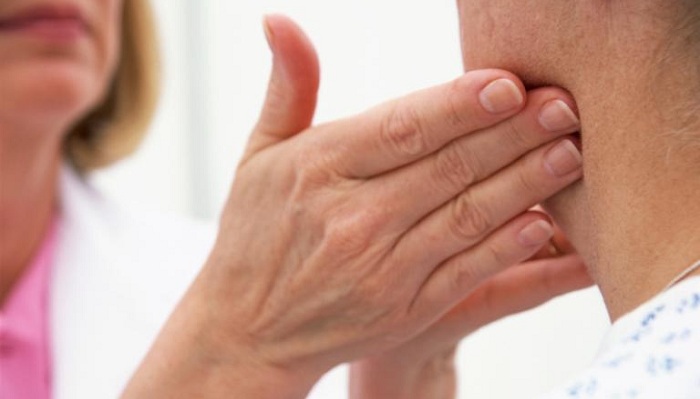Lymphoma is a blood cancer cancer where lymphocytes (certain types of white blood cells) develop abnormally and crowd out healthy cells. There are many different types of lymphoma, with the two main groups being Hodgkin and non-Hodgkin lymphoma. Common symptoms of lymphoma include swollen lymph nodes, fatigue, night sweats, fever, and unexplained weight loss. Less common symptoms like lymphoma rashes occur in cutaneous lymphomas, a rare group of skin lymphomas.
Less commonly, lymphoma of any type can be a painful condition. Where you feel the pain depends on where the lymphoma is. For example, swollen lymph nodes can press on the tissues around the nodes, causing pain. Skin lymphoma manifests in flat patches, raised plaques, or scaly tumorous lumps. These lesions have been described as extremely itchy with pain that feels like the skin is on fire.
Some of the treatments used to fight lymphoma can cause painful side effects, too. That’s because treatment, which is meant to destroy the cancerous cells, can sometimes damage healthy cells as well. As a result, you may experience oral mucositis, which causes mouth soreness, and nerve damage, which can cause unpleasant pins-and-needles or burning sensations.
It’s important to talk to your doctor if you’re experiencing pain. They can help you identify ways to reduce or manage your pain. In addition to talking to your doctor about medical treatment, at-home remedies may help minimize your discomfort. Here are three techniques to try for soothing lymphoma pain at home.
1. Warm It Up: Soothe the Pain
Hot baths and showers can be soothing to aches and pains. Take care not to burn your skin by using water that’s too hot. You can also use a hot water bottle, heating pad, or microwaveable heat pack or a gel pad to ease your pain. It’s best to apply heat for no more than 10 minutes at a time.
2. Cool It Down: Numb the Pain
Some people find that cold helps their pain more than heat. You can buy cooling gel packs or you can make your own ice packs with ice cubes or frozen peas. To avoid damaging the skin any further, wrap your ice or gel pack in a towel to protect your skin from direct cold. You should also limit the application of cold therapy to 10 minutes at a time.
3. Put It Out: Fiery, Itchy Skin
Inflammation of the skin from cutaneous lymphoma can be very painful. The pain can be particularly uncomfortable in areas with tumors or lesions, especially if they happen to become infected. You can help lessen the itching, burning, painful symptoms of skin rashes with a good skincare routine that involves taking regular, cool baths, using medicated emollient creams and ointments that may fight inflammation, and moisturizing regularly to keep skin hydrated and supple.
Remember, you and your healthcare team have approaches available to you to help manage pain from cancer. Talk to your doctor about medical management, and take steps at home to soothe your pain in ways that work best for you. Always check with your doctor before beginning a new hot or cold treatment.




















